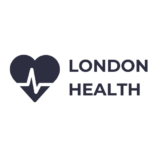Infertility affects 5% of couples that are actively trying to conceive a baby. Infertility can be devastating but there are options available if you’re diagnosed as infertile.
Causes of Female Infertility
Infertility in women may be caused by several different factors but it is commonly associated with health conditions; some of the most common of these conditions are outlined below:
- Endometriosis occurs when tiny pieces of the womb lining break off and start to develop in other areas, such as the ovaries or the fallopian tubes. The pieces develop into cysts or adhesions, which may cause the pelvis to become blocked. The egg often doesn’t develop properly and may not be released properly.
- PCOS (Polycystic Ovarian Syndrome) is a condition which affects ovulation; it is caused by a hormonal imbalance, which reduces ovulation and causes the development of multiple cysts on the ovaries. PCOS decreases fertility because it decreases ovulation.
- Pelvic inflammatory disease (PID) is a disease which affects the upper portion of the genital tract, where the fallopian tubes, ovaries and womb are located. PID causes damage to the fallopian tubes which can prevent the egg from reaching the womb. It is usually caused as a result of sexually transmitted infection.
Other causes of female infertility may also include being severely over or under weight, stress and age (women over the age of 35 are much less likely to conceive than those under 35). Male infertility is usually attributed to a third of cases of infertility and in around a quarter of cases, the cause is unknown.
Improving Female fertility
You can increase your chances of conceiving by eating well, exercising regularly, giving up smoking and drinking and reducing stress. If you have a medical condition which has been found to inhibit fertility, you will be treated for this condition as quickly as possible.
Fertility treatment
Fertility treatment is usually offered to those couples that have failed to conceive a child after 2-3 years of trying. IVF treatment is the most well-known method; it is available on the NHS but there is a long waiting list in most Primary Care Trusts and there is a strict set of criteria; women should be aged between 23 and 39 and the cause of infertility should have been diagnosed. Couples that are overweight and those that smoke and drink regularly or take drugs may not be considered for NHS treatment. There are 4 main types of fertility treatment; these include:
- Fertility drugs: these medications are used to stimulate ovulation.
- Surgery: surgery is used to treat health conditions which result in blockages or damage to internal structures.
- IUI treatment (Intrauterine insemination): this procedure involves the insertion of sperm into the womb using a plastic tube; this method is also known as artificial insemination. This method is used when the cause of infertility cannot be found, when the male has problems with ejaculation or has a low sperm count or the woman has endometriosis. IUI has a 15% success rate per cycle. Currently, six cycles are available on the NHS.
- IVF treatment (In-vitro fertilisation): this treatment involves the fertilisation of the egg outside of the body and is used when the cause of infertility has been diagnosed. The success rate is 29% per cycle for women under the age of 35 and 3 cycles are currently available on the NHS.

